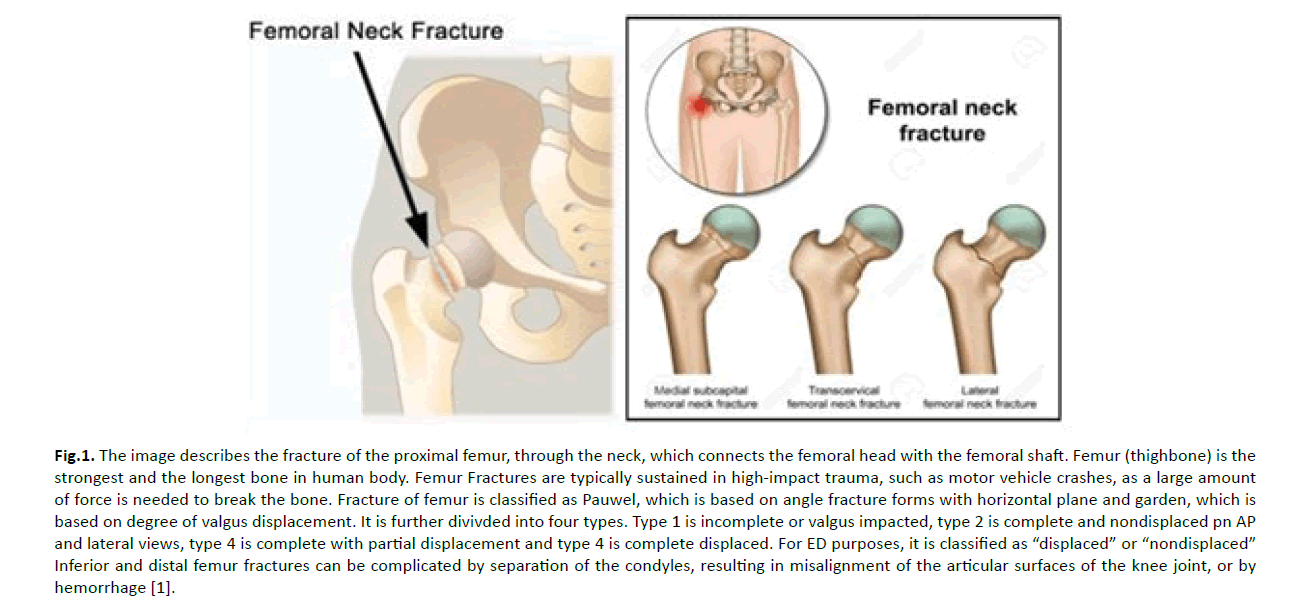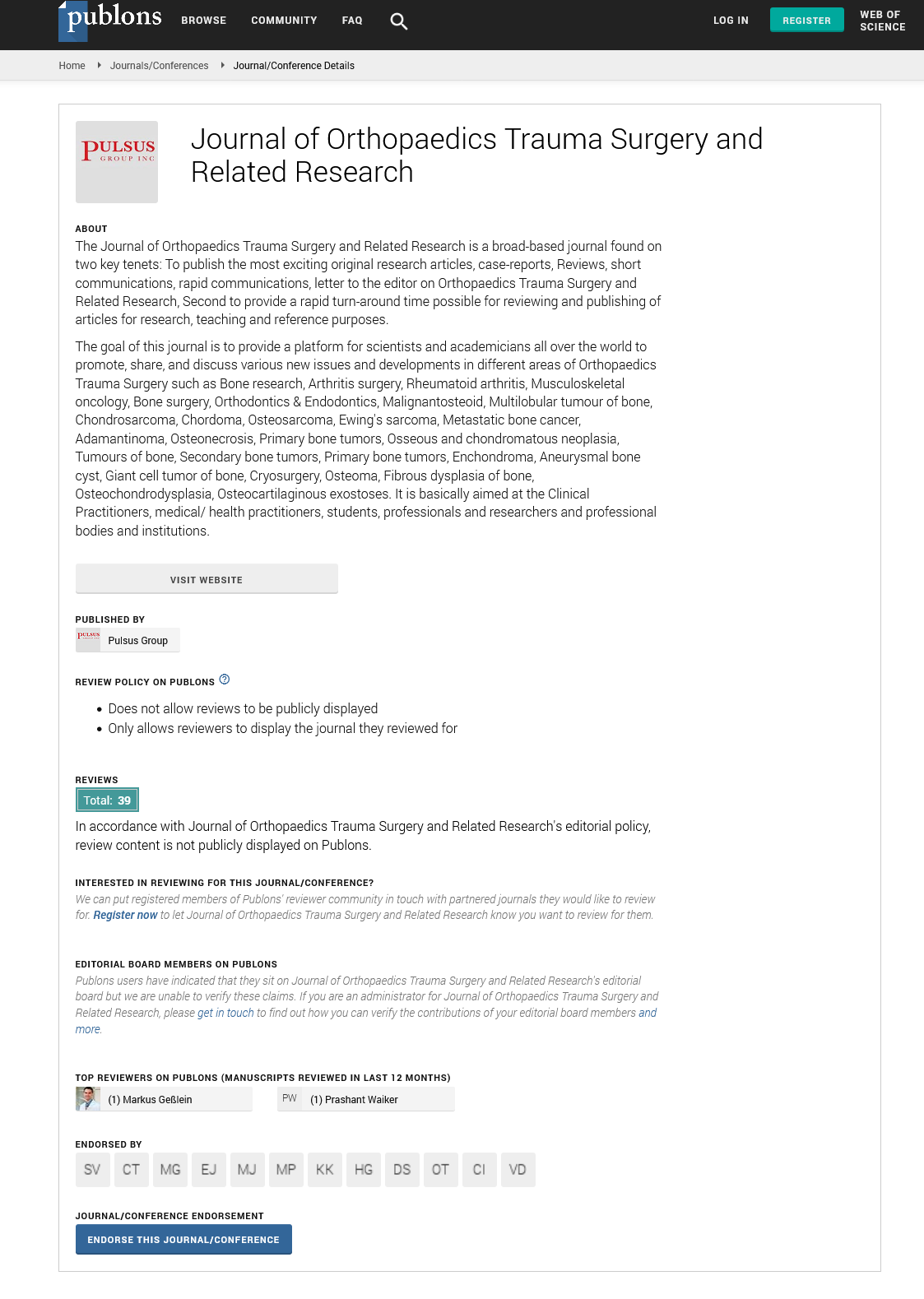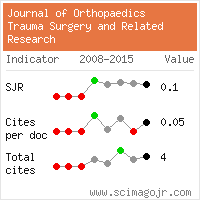Femoral Fractures
Received: 16-Feb-2021 Accepted Date: Feb 28, 2021 ; Published: 08-Mar-2021
This open-access article is distributed under the terms of the Creative Commons Attribution Non-Commercial License (CC BY-NC) (http://creativecommons.org/licenses/by-nc/4.0/), which permits reuse, distribution and reproduction of the article, provided that the original work is properly cited and the reuse is restricted to noncommercial purposes. For commercial reuse, contact reprints@pulsus.com
Figure 1: The image describes the fracture of the proximal femur, through the neck, which connects the femoral head with the femoral shaft. Femur (thighbone) is the strongest and the longest bone in human body. Femur Fractures are typically sustained in high-impact trauma, such as motor vehicle crashes, as a large amount of force is needed to break the bone. Fracture of femur is classified as Pauwel, which is based on angle fracture forms with horizontal plane and garden, which is based on degree of valgus displacement. It is further divivded into four types. Type 1 is incomplete or valgus impacted, type 2 is complete and nondisplaced pn AP and lateral views, type 4 is complete with partial displacement and type 4 is complete displaced. For ED purposes, it is classified as “displaced” or “nondisplaced” Inferior and distal femur fractures can be complicated by separation of the condyles, resulting in misalignment of the articular surfaces of the knee joint, or by hemorrhage [1].




 Journal of Orthopaedics Trauma Surgery and Related Research a publication of Polish Society, is a peer-reviewed online journal with quaterly print on demand compilation of issues published.
Journal of Orthopaedics Trauma Surgery and Related Research a publication of Polish Society, is a peer-reviewed online journal with quaterly print on demand compilation of issues published.